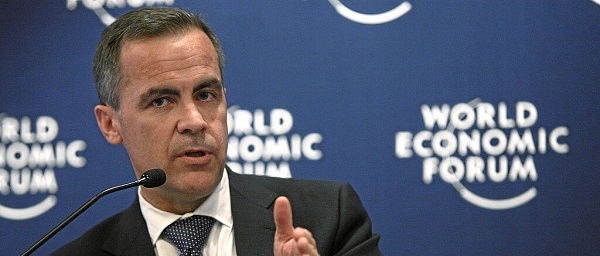Great Reset
Assisted suicide activists should not be running our MAID program

From the MacDonald Laurier Institute
By Shawn Whatley
We should keep the right-to-die foxes out of the regulatory henhouse
The federal government chose a right-to-die advocacy group to help implement its medical assistance in dying legislation. It’s a classic case of regulatory capture, otherwise known as letting the foxes guard the henhouse.
In the “Fourth annual report on Medical Assistance in Dying in Canada 2022,” the federal government devoted several paragraphs of praising to the Canadian Association of MAID Assessors and Providers (CAMAP).
“Since its inception in 2017, (CAMAP) has been and continues to be an important venue for information sharing among health-care professionals and other stakeholders involved in MAID,” reads the report.
With $3.3 million in federal funding, “CAMAP has been integral in creating a MAID assessor/provider community of practice, hosts an annual conference to discuss emerging issues related to the delivery of MAID and has developed several guidance materials for health-care professionals.”
Six clinicians in British Columbia formed CAMAP, a national non-profit association, in October 2016. These six right-to-die advocates published clinical guidelines for MAID in 2017, without seriously consulting other physician organizations.
The guidelines educate clinicians on their “professional obligation to (bring) up MAID as a care option for patients, when it is medically relevant and they are likely eligible for MAID.” CAMAP’s guidelines apply to Canada’s 96,000 physicians, 312,000 nurses and the broader health-care workforce of two-million Canadians, wherever patients are involved.
The rise of CAMAP overlaps with right-to-die advocacy work in Canada. According to Sandra Martin, writing in the Globe and Mail, CAMAP “follow(ed) in the steps of Dying with Dignity,” an advocacy organization started in the 1980s, and “became both a public voice and a de facto tutoring service for doctors, organizing information-swapping and self-help sessions for members.”
Prime Minister Justin Trudeau tapped this “tutoring service” to lead the MAID program. CAMAP appears to follow the steps of Dying with Dignity, because the same people lead both groups. For example, Shanaaz Gokool, a current director of CAMAP, served as CEO of Dying with Dignity from 2016 to 2019.
A founding member and current chair of the board of directors of CAMAP is also a member of Dying with Dignity’s clinician advisory council. One of the advisory council’s co-chairs is also a member of Dying with Dignity’s board of directors, as well as a moderator of the CAMAP MAID Providers Forum. The other advisory council co-chair served on both the boards of CAMAP and Dying with Dignity at the same time.
Overlap between CAMAP and Dying with Dignity includes CAMAP founders, board members (past and present), moderators, research directors and more, showing that a small right-to-die advocacy group birthed a tiny clinical group, which now leads the MAID agenda in Canada. This is a problem because it means that a small group of activists exert outsized control over a program that has serious implications for many Canadians.
George Stigler, a Noble-winning economist, described regulatory capture in the 1960s, showing how government agencies can be captured to serve special interests.
Instead of serving citizens, focused interests can shape governments to serve narrow and select ends. Pharmaceutical companies work hard to write the rules that regulate their industry. Doctors demand government regulations — couched in the name of patient safety — to decrease competition. The list is endless.
Debates about social issues can blind us to basic governance. Anyone who criticizes MAID governance is seen as being opposed to assisted death and is shut out of the debate. At the same time, the world is watching Canada and trying to figure out what is going on with MAID and why we are so different than other jurisdictions offering assisted suicide.
Canada moved from physician assisted suicide being illegal to becoming a world leader in organ donation after assisted death in the space of just six years.
In 2021, Quebec surpassed the Netherlands to lead the world in per capita deaths by assisted suicide, with 5.1 per cent of deaths due to MAID in Quebec, 4.8 per cent in the Netherlands and 2.3 per cent in Belgium. In 2022, Canada extended its lead: MAID now represents 4.1 per cent of all deaths in Canada.
How did this happen so fast? Some point to patients choosing MAID instead of facing Canada’s world-famous wait times for care. Others note a lack of social services. No doubt many factors fuel our passion for MAID, but none of these fully explain the phenomenon. In truth, Canada became world-famous for euthanasia and physician-assisted suicide because we put right-to-die advocates in charge of assisted death.
Regardless of one’s stance on MAID, regulatory capture is a well-known form of corruption. We should expect governments to avoid obvious conflicts of interest. Assuming Canadians want robust and ready access to MAID (which might itself assume too much), at least we should keep the right-to-die foxes out of the regulatory henhouse.
Shawn Whatley is a physician, a Munk senior fellow with the Macdonald-Laurier Institute and author of “When Politics Comes Before Patients: Why and How Canadian Medicare is Failing.”
Business
World Economic Forum Aims to Repair Relations with Schwab

The whistleblower has always been anonymous, and it remains very suspicious that the very organization he created would turn on him after receiving an anonymous letter that they admitted may not have been credible.
World Economic Forum founder Klaus Schwab stepped down from his chairman position at the organization on April 20, 2025, amid accusations of fraud. Our computer had forecast that the WEF would enter a declining trend with the 2024 ECM turning point. This staged coup happened about 37 years after the first Davos meeting (8.6 x 4.3). From our model’s perspective, this was right on time. Now, Schwab and the WEF are working to repair ties.
An anonymous whistleblower claimed that Klaus Schwab and his wife collaborated with USAID to steal tens of millions in funding. The whistleblower has always been anonymous, and it remains very suspicious that the very organization he created would turn on him after receiving an anonymous letter that they admitted may not have been credible. Something like this would never be acceptable in any court of law, especially if it’s anonymous. It would be the worst or the worst hearsay, where you cannot even point to who made the allegation.
Back in April, the WEF said its board unanimously supported the decision to initiate an independent investigation “following a whistleblower letter containing allegations against former Chairman Klaus Schwab. This decision was made after consultation with external legal counsel.”
Now, the WEF is attempting to repair its relationship with its founder ahead of the next Davos meeting. Bloomberg reported that the WEF would like to “normalize their relationship [with Klaus Schwab] in order to safeguard the forum and the legacy of the founder.”
Peter Brabeck-Letmathe has replaced Schwab for the time being, but is less of a commanding force. Schwab’s sudden departure has caused instability in the organization and its ongoing mission. Board members are concerned that support for the organization will begin to decline as this situation remains unresolved.
The World Economic Forum’s annual revenue in 2024 was 440 million francs ($543 million), with the majority of proceeds coming from member companies and fees. Yet, the number of people registered to attend the 2025 Davos event is on par if not slightly exceeding the number of participants from the year prior.
Schwab’s departure has damaged the Davos brand. There is a possibility that the organization is attempted to rebrand after Agenda 2030 failed. The WEF attempted to move away from its zero tolerance stance on ESG initiatives after they became widely unpopular among the big industry players and shifting governments. The brand has attempted to integrate the importance of digital transformation and AI to remain relevant as the tech gurus grow in power and popularity. Those who are familiar with Klaus Schwab know the phrase, “You will own nothing and be happy.” These words have been widely unpopular and caused a type of sinister chaos to surround the brand that was once respected as the high-brow institution of globalist elites.
European Central Bank President Christine Lagarde was slated to replace Schwab in 2027 when her term ends, and all reports claimed that he was prepared to remain in the chairman role for an additional two years to ensure Lagarde could take his place. What changed seemingly overnight that would cause the organization to discard Schwab before he was due to retire?
Schwab denies any misconduct and filed lawsuits against the whistleblowers, calling the accusations “calumnious” and “unfounded.” He believes “character assassination” was the premise of the claims.
I am no fan of Klaus Schwab, as everyone knows. I disagree with his theories from start to finish. Nevertheless, something doesn’t smell right here. This appears to be an internal coup, perhaps to distract attention from the question of alleged funds for the WEF from USAID, or to try to salvage the failed Agenda 2030. Perhaps they will claim that no misconduct had occurred since DOGE did not raise concerns or there is a possibility that those behind the internal coup are concerned that Schwab’s counter lawsuit could uncover new corruption. The investigation into Schwab has not concluded, but after only three months, the WEF would like to wrap it up. It appears that the WEF does not want to welcome Schwab back; rather, they would like to ensure an amicable resolution to maintain both the brand’s reputation as well as the founder’s.
MAiD
Canada’s euthanasia regime is not health care, but a death machine for the unwanted

From LifeSiteNews
After ten years of assisted suicide, Canada has become synonymous with grim stories of death by lethal injection, with the regime’s net growing ever wider.
When Justin Trudeau took power in 2015, he announced that Canada was back and that his election was a harbinger of “sunny ways” and a new era for the country.
It was a new era, alright, but the ways turned out not to be sunny. In his ten years in office, over 60,000 Canadians were euthanized under the regime that his government brought in, and overnight, Canada became an international cautionary tale.
International headlines highlighted the grim story of Canada, where people were getting lethal injections because they were disabled; because they couldn’t get cancer treatment; because they were veterans with PTSD. As the U.K.’s Spectator asked in a chilling 2022 headline: “Why is Canada euthanizing the poor?”
READ: New Conservative bill would ban expansion of euthanasia to Canadians suffering mental illness
Indeed, in the United Kingdom – where Labour MP Kim Leadbeater’s dystopian assisted suicide bill passed last week – Canada was seen as so objectively horrifying that euthanasia advocates insisted that comparisons to their Commonwealth neighbor constituted fearmongering. Leadbeater, in fact, stated that her bill is “worlds apart” from Canada’s euthanasia regime. Anyone advocating for euthanasia must now reckon with Canada, which highlights how short and slick the slope really is.
Earlier this month, the New York state legislature also passed a bill legalizing assisted suicide; assisted suicide laws are also being considered in Maryland and Illinois. On June 14, the New York Times published a powerful op-ed by Ross Douthat titled “Why the Euthanasia Slope Is Slippery.” As is now standard in the international press, Canada’s euthanasia regime came up.
“A few days before the vote, my colleague Katie Engelhart published a report on the expansive laws allowing ‘medical assistance in dying’ in Canada,” Douthat wrote, “which were widened in 2021 to allow assisted suicide for people without a terminal illness, detailing how they worked in the specific case of Paula Ritchie, a chronically ill Canadian euthanized at her own request.”
“Many people who support assisted suicide in terminal cases have qualms about the Canadian system,” Douthat continued. “So it’s worth thinking about what makes a terminal-illness-only approach to euthanasia unstable, and why the logic of what New York is doing points in a Canadian direction even if the journey may not be immediate or direct.”
Notice, here, that a columnist can refer to the “Canadian direction” with the assumption that everybody recognizes, without question, that this a particularly bad direction to be heading in. Even euthanasia advocates, while privately admiring the scale and efficiency of the Canadian killing fields, feel it necessary to distance themselves from Canada publicly.
Douthat noted that the Canadian example reveals why the slippery slope is inevitable; that people have essentially come to expect that doctors “always need to offer something,” and that when no further care or treatment is possible, that assisted suicide should be available. This logic “assumes that the dying have entered a unique zone where the normal promises of medicine can no longer be kept, a state of exception where it makes sense to license doctors to deliver death as a cure.” But Douthat observes:
The problem is that a situation where the doctor tells you that there’s nothing more to be done for you is not really exceptional at all. Every day, all kinds of people are told that their suffering has no medical solution: people with crippling injuries, people with congenital conditions and people … with an array of health problems whose etiology science does not even understand.
READ: Cardinal Dolan denounces New York assisted suicide bill as ‘cheapening of human life’
The logic of assisted suicide means that inevitably, eligibility will expand to all kinds of suffering.
“Suffering is general and not limited, the dying are not really a category unto themselves, and the case for a lethal solution will creep beyond the bounds you set,” Douthat concluded. “In the end, you can have a consensus that suicide is intrinsically wrong, that suffering should be endured to whatever end and that doctors shouldn’t kill you. Or you can have an opening to death that will be narrow only at the start – and in the end, a wide gate through which many, many people will be herded.”
How do we know? Well, Douthat writes, “The Canadian experience shows this clearly.” After ten years of sunny ways, “Canada” has become synonymous with grim stories of death by lethal injection.
-

 Energy1 day ago
Energy1 day agoChina undermining American energy independence, report says
-

 Business1 day ago
Business1 day agoTrump on Canada tariff deadline: ‘We can do whatever we want’
-

 Automotive1 day ago
Automotive1 day agoElectric vehicle sales are falling hard in BC, and it is time to recognize reality.
-

 Business23 hours ago
Business23 hours agoEurope backs off greenwashing rules — Canada should take note
-

 Automotive23 hours ago
Automotive23 hours agoPower Struggle: Electric vehicles and reality
-

 Energy2 days ago
Energy2 days agoCarney’s Bill C-5 will likely make things worse—not better
-

 Brownstone Institute2 days ago
Brownstone Institute2 days agoFDA Exposed: Hundreds of Drugs Approved without Proof They Work
-

 International2 days ago
International2 days agoTrump predicts Israel-Hamas ceasefire ‘within the next week’











